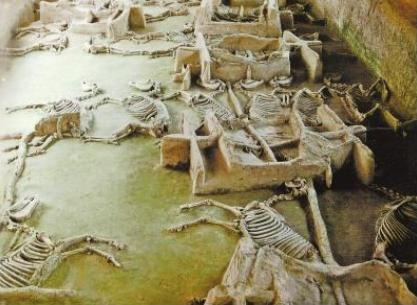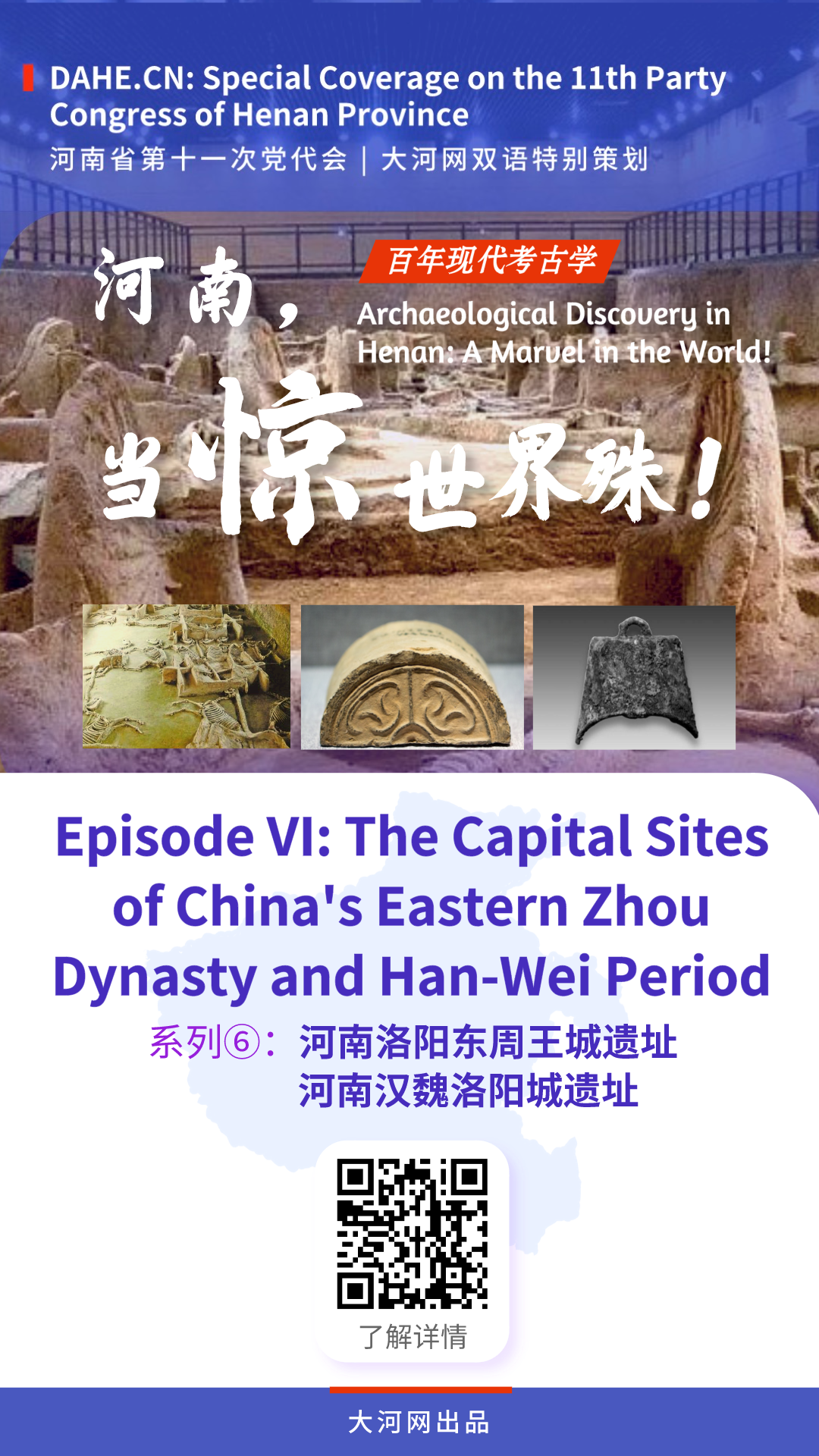Henan province has 14 items listed among the recent-concluded selection of "China's 100 Major Archaeological Discoveries in Last 100 Years", ranking 1st nationwide.
During the 11th Party Congress of Henan Province, we are launching the Archaeological Discovery in Henan: A Marvel in the World series featuring 7 bilingual stories about Henan's 14 items in "China's 100 Major Archaeological Discoveries in Last 100 Years" to demonstrate Henan's long history and rich culture.
Here is the 6th episode: The Capital Site of the Eastern Zhou Dynasty & The Capital Site of China's Han-Wei Period.
Click on the video above
The Capital Site of the Eastern Zhou Dynasty in Luoyang
The Capital Site of the Eastern Zhou Dynasty is located in the area of today's Wangcheng Park of Luoyang city, Henan province.
The remains of 6-horse chariot. [Photo provided to Henan Daily]
The site of the capital of the Eastern Zhou Dynasty is basically square in shape and about 15 kilometers in circumference with city walls (including 3 corners) on all sides. The majority of the site is located in the mid-western area of Luoyang's Xigong district, covering an area of about 9 square kilometers. The city walls were first built in the mid Spring and Autumn Period and maintained for several times in the Warring States Period, Qin and Han dynasties. In the site's southwestern area the palace remains were discovered, core of the capital, while in its northeastern area found a zone for making pottery wares. Besides, to the east of the building foundations in the site's southwestern area and to the northeast of Qujiatun village more than 80 pits for storing grains were discovered. At the same time, outside the city site the remains of large courier station-like buildings were also found.
The Capital Site of the Eastern Zhou Dynasty provided valuable physical evidence for the study of the politics, economy and culture of the Zhou Dynasty. Besides, the well-preserved remains of 6-horse chariot presented new evidence to study the etiquette and funeral systems at that time, becoming one of the major findings of the Eastern Zhou Dynasty during the 21st century.
In May 2013, the Capital Site of the Eastern Zhou Dynasty was listed among the seventh group of major historical and cultural sites protected at the national level in China.
The Capital Site of China's Han-Wei Period in Luoyang
The Capital Site of China's Han-Wei Period in Luoyang is 15 kilometers east of the city's Luolong district.
The Capital Site of China's Han-Wei Period in Luoyang. [Photo provided to Henan Daily]
It was first built in the Western Zhou Dynasty and used until the early Tang Dynasty. The central axis at the site was an innovation, which influenced the layout design of the subsequent capitals for thousands of years. Covering an area of almost 100 square kilometers, the site consists of three parts, including imperial city, inner city and outer city. Such a large area makes it one of the largest ancient capitals in China and even the world.
The Capital Site of China's Han-Wei Period in Luoyang was not only a capital in the Eastern Han Dynasty, the Kingdom of Wei (the most powerful kingdom of the Three Kingdoms Period), the Western Jin Dynasty and the Northern Wei Dynasty, but also the most important international trade metropolis in the eastern end of the Silk Road, as a starting point of the Silk Road in the East.
In 1961, the Capital Site of China's Han-Wei Period in Luoyang was listed among the first group of major historical and cultural sites protected at the national level in China. (Source: dahe.cn Translator: Zhao Hanqing Video & Poster: Wang Junyi Proofreader: Li Wenjing)
Related reports
Special Coverage on Party Congress | Episode I: The Jiahu Site & The Peiligang Site
Special Coverage on Party Congress | Episode II: The Yangshao Site & The Miaodigou Site
Special Coverage on Party Congress | Episode III: The Shuanghuaishu Site & The Erlitou Site





